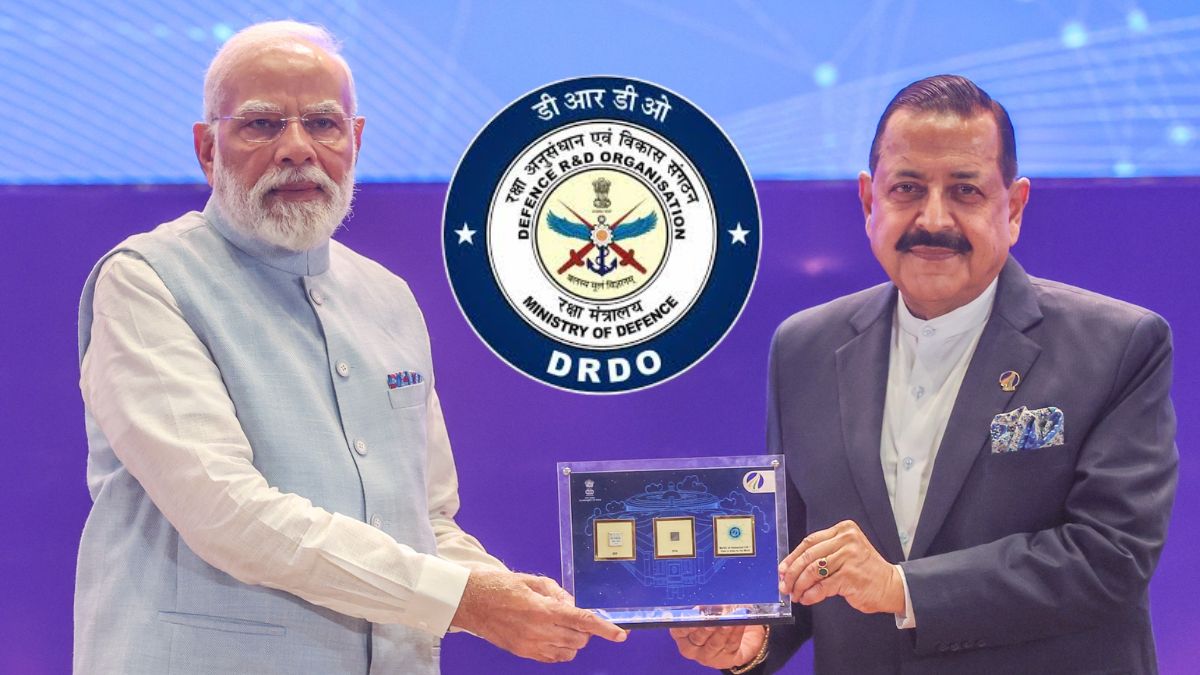The Defence Research and Development Organisation (DRDO) is taking centre stage at the Emerging Science, Technology and Innovation Conclave (ESTIC) 2025, being held at Bharat Mandapam, New Delhi, from November 3–5, 2025. The conclave, themed ‘Viksit Bharat 2047: Pioneering Sustainable Innovation, Technological Advancement, and Empowerment’, was inaugurated by Prime Minister Narendra Modi.
During the inauguration ceremony, the Prime Minister launched a Rs 1 lakh crore Research, Development and Innovation Fund to bolster a private sector–driven innovation ecosystem.
For India’s defence ecosystem, DRDO’s participation is more than symbolic as it underscores the strategic importance of indigenous technology, especially in semiconductors and advanced electronics, which form the backbone of modern military systems.
DRDO leading the charge in electronics and semiconductor manufacturing?
As one of the key organisers, DRDO is leading the thematic session on Electronics and Semiconductor Manufacturing, an area critical to India’s ambitions of defence and technological self-reliance.
DRDO Chairman Dr. Samir V Kamat, who also serves as Secretary of Defence R&D, will chair the technical session on Wednesday (November 5, 2025). He will be joined by senior DRDO scientists, including Suma Varughese, Director General (Micro Electronic Devices, Computational Systems & Cyber Systems), Dr. Ramalingam Balamuralikrishnan, Director of the Defence Metallurgical Research Laboratory, and Dr. Somna Mahajan from the Solid State Physics Laboratory.
Together, they will outline India’s indigenous advances in semiconductor technologies, a domain vital for the performance and security of systems spanning communications, aerospace, weapon guidance, and electronic warfare.
India’s indigenous semiconductor breakthroughs
DRDO has achieved major milestones in building home-grown semiconductor capabilities, including the development of 4-inch Silicon Carbide (SiC) wafers, key to high-performance electronic devices for defence and aerospace applications; Gallium Nitride (GaN) High Electron Mobility Transistors (HEMTs) capable of power levels up to 150W, essential for next-generation radar and communication systems.
These advancements mark a critical step in reducing dependence on foreign semiconductor imports, a strategic vulnerability in modern warfare where electronics drive everything from missiles to surveillance grids.
How ESTIC 2025 is a conclave for the future?
Organised under the guidance of the Principal Scientific Adviser, ESTIC 2025 unites 13 ministries and departments to chart India’s path toward technological leadership. The event brings together over 3,000 participants, including Nobel laureates, scientists, defence innovators, and policymakers, focusing on 11 key domains, from Quantum Science and AI to Advanced Materials, Health Tech, and Space Systems.
By anchoring discussions on semiconductors and electronic manufacturing, DRDO is reinforcing its role as a bridge between defence innovation and national industry, ensuring that India’s march toward Viksit Bharat 2047 is built on secure, indigenous, and future-ready technologies.
